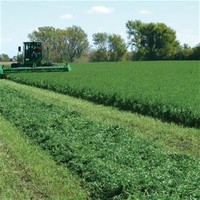Facts about Legumes

The nitrogen is then available to be used by animals that eat the legume plants and by other plants when it is absorbed by the soil after the legumes' death.

Grain legumes were first cultivated in the Middle East, perhaps as long as 10,000 years ago.

Today India is the largest producer and consumer of grain legumes for human consumption (AEP 2006).

When researchers analyzed this data in relation to the risk of death from heart disease, they found that legumes were associated with an 82 percent reduction in risk.

Nitrogen-fixing legumes form nodules on their roots in which the bacteria live, receiving carbohydrates from the plant, and in which nitrogen is produced and stored.

The great majority of legumes have this association, but a few genera (e.g., Styphnolobium) do not.

Clovers, members of the genus Trifolium with about 300 species, are also important forage legumes.

Crops of legumes, such as alfalfa and beans, were grown in alternate years with grains, such as wheat and corn.

Through a symbiotic relationship (mutualism) with nitrogen-fixing bacteria, legumes are able to convert atmospheric nitrogen into a form that plants can use.

One reason grain legumes are so important as crops is that they have high protein content.



